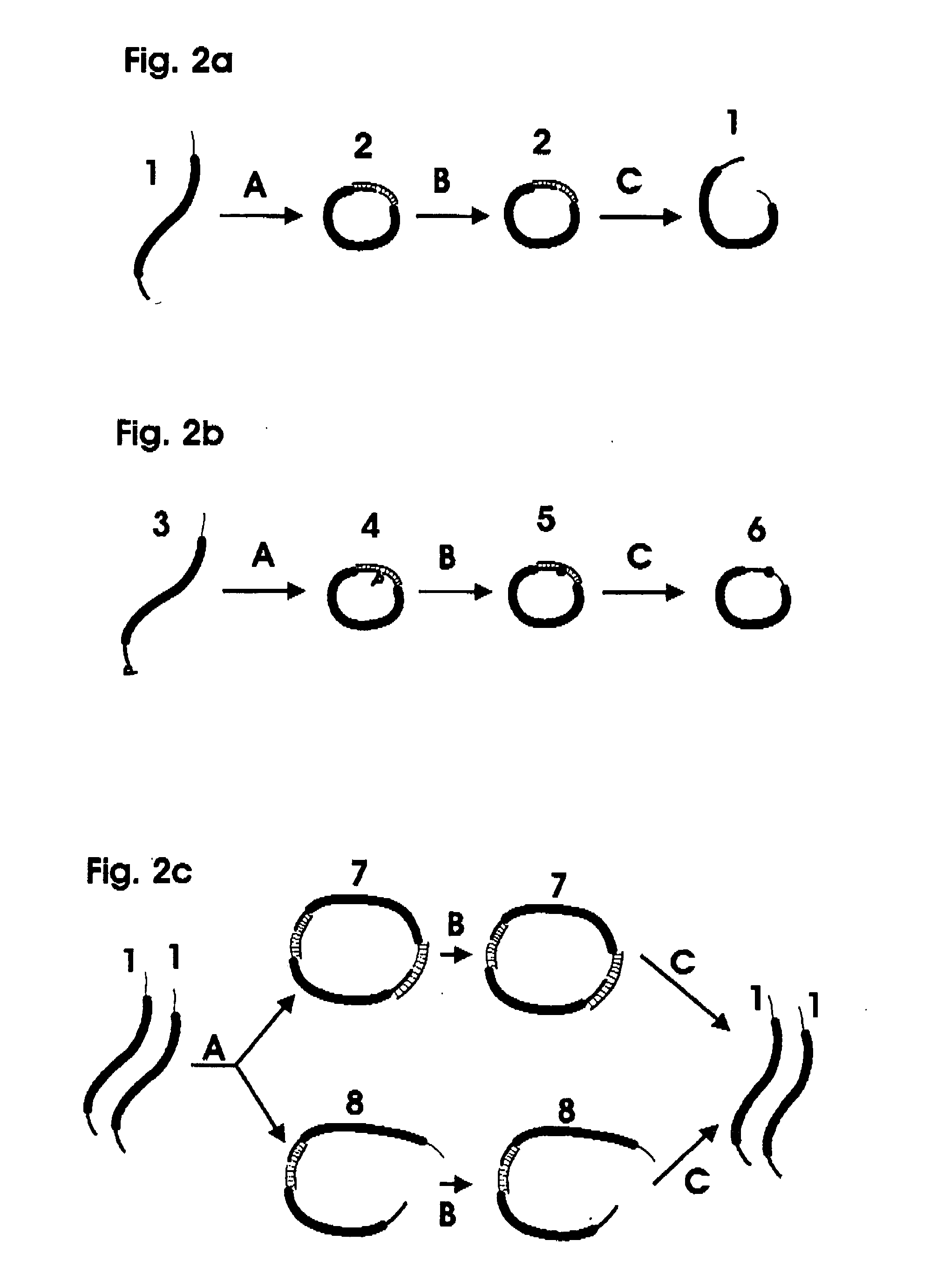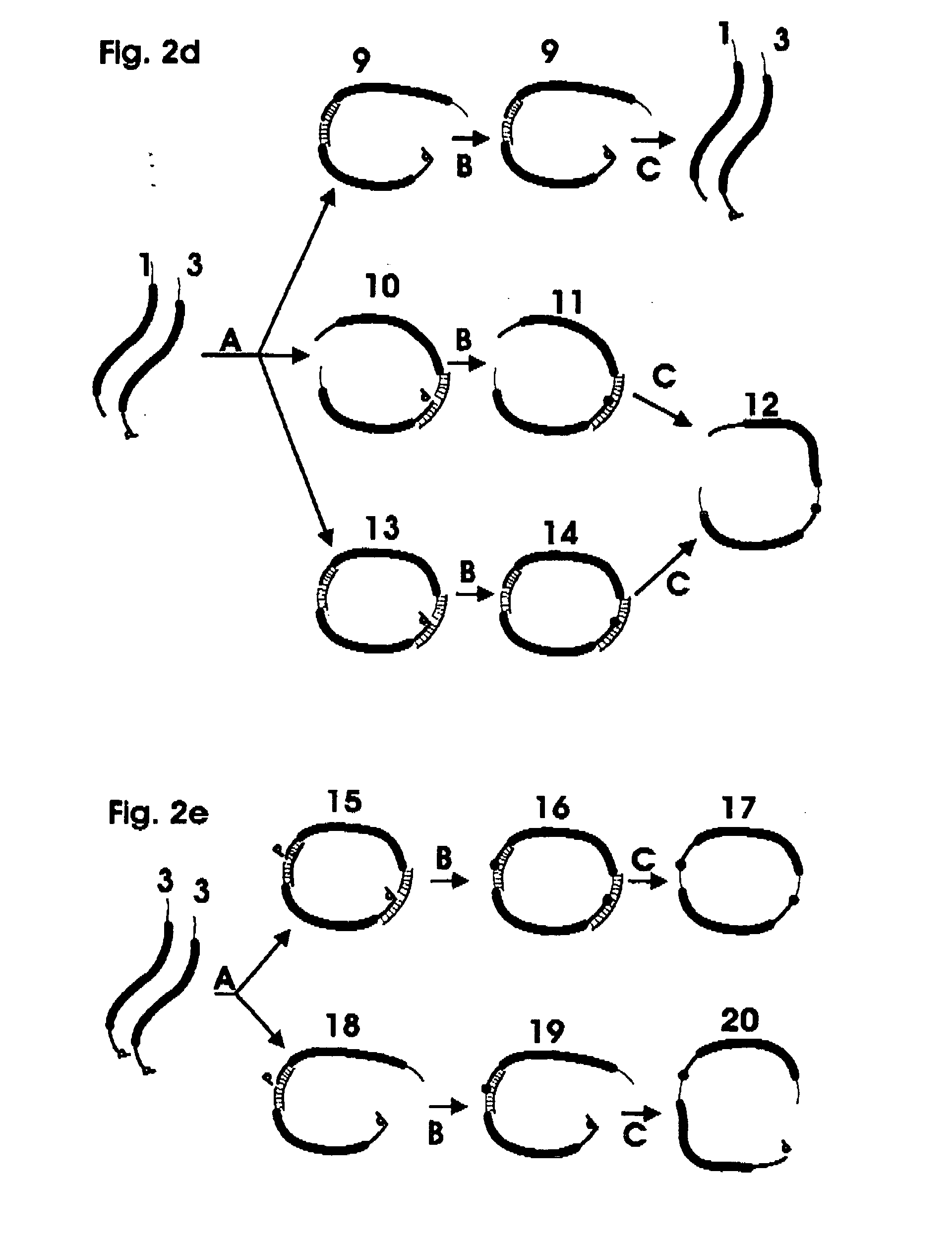Polymeric nucleic acid hybridization probes
a nucleic acid hybridization and probe technology, applied in the field of nucleic acid hybridization, can solve the problems of limiting the number of simultaneous probe sequences that can be used, and requiring a large number of hybridization reactions, so as to discriminate against single-base mismatches
- Summary
- Abstract
- Description
- Claims
- Application Information
AI Technical Summary
Benefits of technology
Problems solved by technology
Method used
Image
Examples
Embodiment Construction
[0030] The invention utilizes linked nucleic acid monomers to form polymeric hybridization probes. The monomers are made up of at least a nucleic acid probe sequence that is designed to be complementary to sequences of interest that may be present in the target nucleic acid. The monomer may also have linker on either or both ends, each linker comprising a nucleic acid sequence or other molecular moiety or a combination of both. The polymeric probe can be attached to hybridization surfaces in the same manner as long DNA probes, binding at several locations along the polymeric chain. In between these binding locations, monomeric units will be available for hybridization to the target DNA. Blocking molecules can be used to bind to a portion of the surface, thus preventing polymeric probes from attaching at those sites and increasing the fraction of monomeric units in the polymeric probe that are available for hybridization. The length of the polymeric probe will allow many of the monom...
PUM
| Property | Measurement | Unit |
|---|---|---|
| Fraction | aaaaa | aaaaa |
| Temperature | aaaaa | aaaaa |
| Length | aaaaa | aaaaa |
Abstract
Description
Claims
Application Information
 Login to View More
Login to View More - R&D
- Intellectual Property
- Life Sciences
- Materials
- Tech Scout
- Unparalleled Data Quality
- Higher Quality Content
- 60% Fewer Hallucinations
Browse by: Latest US Patents, China's latest patents, Technical Efficacy Thesaurus, Application Domain, Technology Topic, Popular Technical Reports.
© 2025 PatSnap. All rights reserved.Legal|Privacy policy|Modern Slavery Act Transparency Statement|Sitemap|About US| Contact US: help@patsnap.com



